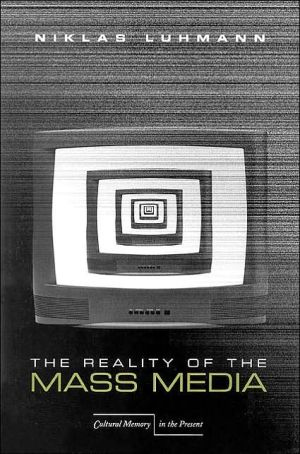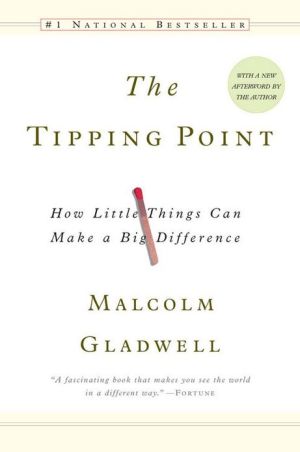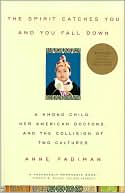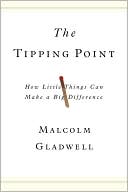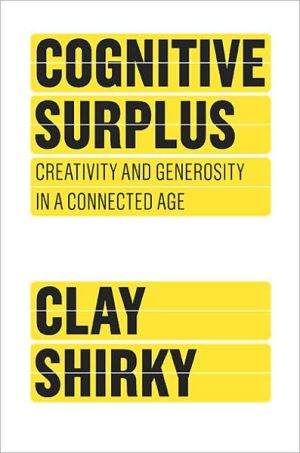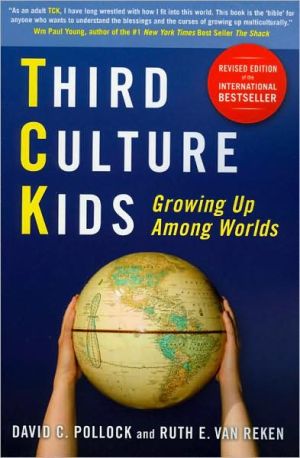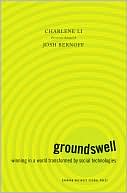The Reality of the Mass Media
In The Reality of the Mass Media Luhmann extends his theory of social systems - applied in his earlier works to the economy, the political system, art, religion, the sciences and law - to an examination of the role of mass media in the constitution of social reality.\ Luhmann argues that the system of mass media is a set of recursive, self-referential programmes of communication, whose functions are not determined by the external values of truthfulness, objectivity, or knowledge, nor by...
Search in google:
In The Reality of the Mass Media, Luhmann extends his theory of social systems—applied in his earlier works to the economy, the political system, art, religion, the sciences, and law—to an examination of the role of mass media in the construction of social reality.
\ The Reality of the Mass Media\ \ \ \ By Niklas Luhmann \ Stanford University Press \ Copyright © 1996 \ \ Westdeutscher Verlag\ All right reserved. \ \ \ ISBN: 978-0-8047-4076-0 \ \ \ \ \ Chapter One Differentiation as a Doubling of Reality \ Whatever we know about our society, or indeed about the world in which we live, we know through the mass media. This is true not only of our knowledge of society and history but also of our knowledge of nature. What we know about the stratosphere is the same as what Plato knows about Atlantis: we've heard tell of it. Or, as Horatio puts it: 'So have I heard, and do in part believe it.' On the other hand, we know so much about the mass media that we are not able to trust these sources. Our way of dealing with this is to suspect that there is manipulation at work, and yet no consequences of any import ensue because knowledge acquired from the mass media merges together as if of its own accord into a self-reinforcing structure. Even if all knowledge were to carry a warning that it was open to doubt, it would still have to be used as a foundation, as a starting point. Unlike in the gothic novels of the eighteenth century, the solution to the problem cannot be found in someone secretly pulling strings behind the scenes, however much even sociologists themselves would like to believe this to be the case. What we are dealing with - and this is the theory to be elaborated in what follows - is an effect of the functional differentiation of modern society. This effect can be comprehended, it can be the subject of theoretical reflection. But we are not talking about a mystery that would be solved once it is made known. Rather, one could say that modern society has an 'Eigenvalue' or an 'Eigenbehaviour' - in other words, recursively stabilized functional mechanisms, which remain stable even when their genesis and their mode of functioning have been revealed.\ In what follows, the term 'mass media' includes all those institutions of society which make use of copying technologies to disseminate communication. This means principally books, magazines and newspapers manufactured by the printing press, but also all kinds of photographic or electronic copying procedures, provided that they generate large quantities of products whose target groups are as yet undetermined. Also included in the term is the dissemination of communication via broadcasting, provided that it is generally accessible and does not merely serve to maintain a telephone connection between individual participants. The mass production of manuscripts from dictation, as in medieval writing rooms, does not qualify for inclusion, nor does the public accessibility of the room in which the communication takes place - in other words, not public lectures, theatrical productions, exhibitions, or concerts, though the term does include the circulation of such performances via film or diskette. This delimitation may appear somewhat arbitrary, but the basic idea is that it is the mechanical manufacture of a product as the bearer of communication - but not writing itself - which has led to the differentiation of a particular system of the mass media. Thus, the technology of dissemination plays the same kind of role as that played by the medium of money in the differentiation of the economy: it merely constitutes a medium which makes formations of forms possible. These formations in turn, unlike the medium itself, constitute the communicative operations which enable the differentiation and operational closure of the system.\ The crucial point at any rate is that no interaction among those co-present can take place between sender and receivers. Interaction is ruled out by the interposition of technology, and this has far-reaching consequences which define for us the concept of mass media. Exceptions are possible (though never with all participants); however, they come across as staged and are indeed handled as such in broadcasting studios. They do not alter in the slightest the technologically conditioned necessity for interruption of contact. The interruption of direct contact, on the one hand, ensures high levels of freedom of communication. A surplus of possibilities for communication thus arises which can only be regulated within the system, by means of self-organization and the system's own constructions of reality. On the other hand, two selecting factors are at work: the extent of willingness to transmit and the amount of interest in tuning in, which cannot be coordinated centrally. The organizations which produce mass media communication are dependent upon assumptions concerning acceptability. This leads not only to the standardization but also to the differentiation of their programmes, or at any rate to a standardization not tailored to individuals. This, however, is precisely how individual participants have the chance to get what they want, or what they believe they need to know in their own milieu (for example, as politicians or teachers), from the range of programmes on offer. The mode of operation of the mass media is thus subject to external structural conditions which place limits on what they are able to realize.\ We can speak of the reality of the mass media in a dual sense. Our title is intended to mark this dual meaning and is therefore to be understood as ambivalent. The unity of this twofold meaning is the point which is to be elaborated in the following discussion.\ The reality of the mass media, their real reality, as we might say, consists in their own operations. Things are printed and broadcast. Things are read. Programmes are received. Numerous communications involving preparation and subsequent discussion closely surround this activity. However, the process of dissemination is only possible on the basis of technologies. The way in which these technologies work structures and limits what is possible as mass communication. This has to be taken into account in any theory of the mass media. Nonetheless, we do not want to regard the work of these machines, nor indeed their mechanical or electronic internal workings, as an operation within the system of the mass media. Not everything which is a condition of possibility of systems operations can be a part of the operational sequences of the system itself. (This is also true, of course, of living beings and indeed of any autopoietic system.) It makes good sense, therefore, to regard the real reality of the mass media as the communications which go on within and through them. We have no doubt that such communications do in fact take place (even though, from an epistemological point of view, all statements, including these, are the statements of an observer and to this extent have their own reality in the operations of the observer).\ Whereas we exclude - notwithstanding their importance - technical apparatuses, the 'materialities of communication', from the operation of communicating because they are not what is being uttered, we do include reception (be it comprehending or mis-comprehending). Communication only comes about when someone watches, listens, reads - and understands to the extent that further communication could follow on. The mere act of uttering something, then, does not, in and of itself, constitute communication. On the other hand, it is difficult in the case of the mass media (in contrast to interaction that occurs among those co-present) to determine the target group involved in each instance. To a large extent, therefore, obvious presence has to be substituted by assumptions. This is especially true if the process of turning comprehension/ mis-comprehension into further communication within or outside the system of the mass media is also to be taken into account. However, this gap in competence does have the advantage that recursive loops do not get drawn too tightly, that communication does not immediately become blocked by failures and contradictions, and that, instead, it is able to seek out a willing audience and to experiment with possibilities.\ These conceptual outlines refer to the operations that actually occur by which the system reproduces itself and its difference to the environment. However, we can speak of the reality of the mass media in another sense, that is, in the sense of what appears to them, or through them to others, to be reality. Put in Kantian terms: the mass media generate a transcendental illusion. According to this understanding, the activity of the mass media is regarded not simply as a sequence of operations, but rather as a sequence of observations or, to be more precise, of observing operations. In order to come to this understanding of the mass media, then, we have to observe their observing. For the approach introduced first above, first-order observation is sufficient, as if we were dealing with facts. For the second approach, it is necessary to adopt the attitude of a second-order observer, an observer of observers.\ In order to hold on to this distinction, we can speak (always with reference to an observer) of a first reality and of a second (or observed) reality. What we now observe is a doubling of reality which takes place in the observed system of the mass media. It does indeed communicate - about something. About something else or about itself. What we have, therefore, is a system which is capable of distinguishing between self-reference and other-reference (Fremdreferenz). Within the terms of a classical discourse of truth as well as of ordinary, everyday understandings of truth, it would be interesting at this point to know whether that which the media report is true or not true; or if it is half true and half not true because it is being 'manipulated'. But how are we to tell? This may be possible in isolated cases for one or another observer and in particular for the systems being reported on; but for the mass daily flow of communications it is, of course, impossible. This issue will be kept firmly outside the discussion that follows. We shall stick to our starting point, namely, that the mass media, as observing systems, are forced to distinguish between self-reference and other-reference. They cannot do otherwise. They cannot simply consider themselves to be the truth - and therein lies a sufficient guarantee for the time being. As a result, they must construct reality - another reality, different from their own.\ This may at first seem completely trivial. It would not even be worth mentioning, if this kind of 'constructivism' were not a topic of heated debate at the level of epistemology and even for the mass media themselves. However, if all knowledge must be acquired on the basis of a distinction between self-reference and other-reference, it is also the case that all knowledge (and therefore all reality) is a construction. For this distinction between self-reference and other-reference cannot exist in the system's environment (what would be 'self' here, and what would be 'other'?), but rather only within the system itself.\ We therefore opt for operational constructivism, not only here but also in the realm of epistemology. Constructivist theories maintain that cognitive systems are not in a position to distinguish between the conditions of existence of real objects and the conditions of their own knowledge because they have no access to such real objects other than through knowledge. It is certainly the case that this defect can be corrected at the level of second-order observation, the observation of cognitive operations of other systems. In that instance, it is possible to see how their (other systems') frames shape their knowledge. However, this merely leads to a recurrence of the problem at the level of second-order observation. Even observers of other observers cannot distinguish the conditions of existence of these latter observers from the conditions of knowing that what they are dealing with are particular, self-conditioning observers.\ Even given the divergence between first-order and second-order observation, this distinction does not remove the basic premise of constructivism but rather confirms it by referring back to itself, that is, 'autologically'. Regardless of how cognition reflects upon itself, the primary reality lies not in 'the world out there', but rather in the cognitive operations themselves, because the latter are only possible under two conditions, namely, that they form a self-reproducing system and that this system can only observe by distinguishing between self-reference and other-reference. These conditions are to be thought of as empirical (not as transcendental). This also means they can only be fulfilled on the basis of numerous other assumptions which cannot be guaranteed through the system itself. Operational constructivism has no doubt that an environment exists. If it did, of course, the concept of the system's boundary, which presupposes that there is another side, would make no sense either. The theory of operational constructivism does not lead to a 'loss of world', it does not deny that reality exists. However, it assumes that the world is not an object but is rather a horizon, in the phenomenological sense. It is, in other words, inaccessible. And that is why there is no possibility other than to construct reality and perhaps to observe observers as they construct reality. Granted, it may be the case that different observers then have the impression that they are seeing 'the same thing' and that theorists of transcendentalism are only able to explain this through the construction of transcendental a prioris - this invisible hand which keeps knowledge in order in spite of individuality. But in fact this too is a construction, because it is simply not possible without the respective system-specific distinction between self-reference and other-reference.\ What is meant by 'reality' can therefore only be an internal correlate of the system's operations - and not, say, a characteristic which attaches to objects of knowledge additionally to that which distinguishes them in terms of individuality or kind. Reality, then, is nothing more than an indicator of successful tests for consistency in the system. Reality is produced within the system by means of sense-making. It arises whenever inconsistencies which might emerge from the part played by memory in the system's operations are resolved - for example, by the construction of space and time as dimensions with various points at which different perceptions or memories can be localized without conflicting with one another. If reality is expressly emphasized in the communication (a 'real' lemon, a 'real' experience), then what is simultaneously emphasized is that doubts are possible and perhaps even appropriate. The more complex the system becomes and the more it exposes itself to irritations, the more variety the world can permit without relinquishing any reality - and the more the system can afford to work with negations, with fictions, with 'merely analytical' or statistical assumptions which distance it from the world as it is.\ In this case, however, every statement about reality is tied to system references which cannot be further generalized (transcendentalized). So our question now has the form: how do mass media construct reality? Or, to put it in a more complicated way (and related to one's own self-reference!): how can we (as sociologists, for example) describe the reality of their construction of reality? The question is not: how do the mass media distort reality through the manner of their representations? For that would presuppose an ontological, available, objectively accessible reality that can be known without resort to construction; it would basically presuppose the old cosmos of essences. Scientists might indeed be of the opinion that they have a better knowledge of reality than the way it is represented in the mass media, committed as these are to 'popularization'. But that can only mean comparing one's own construction to another. One may do that, encouraged by a society which believes scientific descriptions to be authentic knowledge of reality. But this has no bearing whatever on the possibility of first asking: how do mass media construct reality?\ (Continues...)\ \ \ \ \ \ Excerpted from The Reality of the Mass Media by Niklas Luhmann Copyright © 1996 by Westdeutscher Verlag. Excerpted by permission.\ All rights reserved. No part of this excerpt may be reproduced or reprinted without permission in writing from the publisher.\ Excerpts are provided by Dial-A-Book Inc. solely for the personal use of visitors to this web site.\ \
1. Differentiation as a Doubling of Reality.2. Self-reference and other-reference.3. Coding.4. System-specific Universalism.5. News and In-Depth Reporting.6. Ricúpero.7. Advertising.8. Entertainment.9. Unity and Structural Couplings.10. Individuals.11. The Construction of Reality.12. The Reality of Construction.13. The Function of the Mass Media.14. The Public.15. Schema Formation.16. Second-order Cybernetics as Paradox.Notes.Index.
\ From the Publisher'This brilliant book is of interest both as an insightful contribution to media studies theory and as a lively and readable application of Luhmann's ingenious and influential system, which neatly descibes the paradoxes of media(ted) reality.' William Outhwaite, University of Sussex\ \ \
